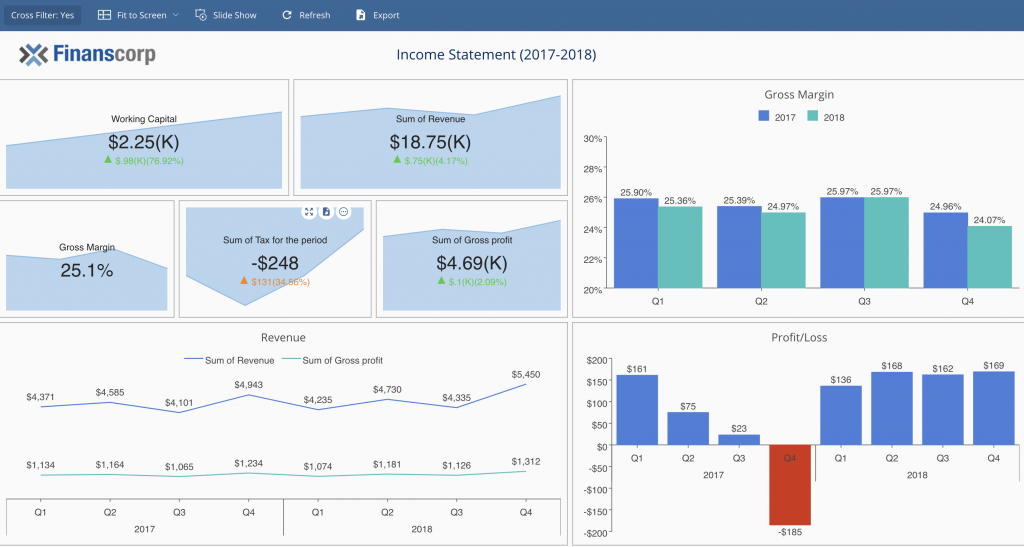Car Accident T-Bone: Who Is at Fault?
When two cars collide in a T-bone accident, determining who is at fault can be a complex and contentious issue. These collisions, also known as side-impact collisions, occur when the front of one vehicle crashes into the side of another, often resulting in serious injuries and extensive vehicle damage. Understanding the factors that contribute to T-bone accidents is crucial to assigning fault and seeking appropriate compensation.
Determining Fault in T-Bone Collisions
Assigning fault in a T-bone collision hinges on a thorough investigation of the circumstances surrounding the accident. Several key factors come into play, including:
The most critical factor in determining fault is the right-of-way. Drivers are legally obligated to yield to vehicles with the right-of-way, whether at intersections, stop signs, or yield signs. If a driver fails to yield and causes a T-bone collision, they will likely be held liable for the accident. Establishing the right-of-way can involve examining traffic signals, stop signs, and witness statements.
Another important factor is the speed of the vehicles involved. Excessive speed can significantly increase the severity of a T-bone collision and may indicate negligence on the part of the speeding driver. Investigators will examine vehicle damage, skid marks, and witness accounts to determine the speed of each vehicle at the time of the accident.
Distracted driving is a major contributing factor to T-bone collisions. Drivers who are texting, talking on the phone, or engaging in other distracting activities are more likely to fail to notice other vehicles and yield the right-of-way. Evidence of distracted driving can include witness statements, cell phone records, and dashcam footage.
Finally, intoxication can also play a role in T-bone collisions. Drivers who are under the influence of alcohol or drugs are impaired in their ability to operate a vehicle safely and may make poor decisions that lead to accidents. Blood alcohol content tests and witness statements can help determine whether intoxication was a factor in the collision.
Car Accident T-Bone: Who’s At Fault?
After a harrowing t-bone car accident, the aftermath is often a whirlwind of confusion and chaos. Determining fault, however, is paramount in navigating the legal and insurance processes that follow. So, who do we point the finger at in a t-bone collision?
Legal Framework for Fault Determination
Negligence is the legal bedrock for establishing fault in car accidents. It’s a legal concept that assigns liability to individuals whose actions fall short of a reasonable standard of care, leading to damages or injuries. In a t-bone crash, several factors paint the canvas of fault determination:
- Driver actions: Were they speeding, running a red light, or driving recklessly?
- Traffic laws: Did one driver fail to yield, observe stop signs, or obey traffic signals?
- Vehicle condition: Could faulty brakes or defective tires have contributed to the accident?
These factors intertwine like threads in a tapestry, revealing the negligence that caused the t-bone crash. Careful investigation by law enforcement, insurance companies, and attorneys unravels this tapestry, assigning fault and determining liability.
Car Accident T Bone: Who is at Fault?
A T-bone accident occurs when the front of one vehicle crashes into the side of another, resembling the shape of the letter "T". Determining fault in such collisions can be tricky, as it often involves multiple factors. Understanding the rules of the road, insurance laws, and potential contributing factors can help clarify who is liable.
Establishing Negligence
To establish negligence in a T-bone accident, it must be proven that one driver breached their duty of care by failing to take reasonable precautions, which resulted in the collision. This involves demonstrating the following elements:
Breach of Duty
Drivers have a legal duty to operate their vehicles safely and avoid causing harm to others. This includes obeying traffic laws, paying attention to the road, and taking reasonable steps to prevent accidents. When a driver breaches this duty by engaging in careless or reckless behavior, they may be considered negligent.
Causation
To establish negligence, it must be shown that the driver’s breach of duty was the direct cause of the accident. This means that the accident would not have occurred if the driver had acted reasonably. Proving causation can be challenging, especially in T-bone accidents, where multiple factors may have contributed to the collision.
Damages
In addition to proving negligence, the injured party must also demonstrate that they suffered damages as a result of the accident. These damages can include medical expenses, lost wages, property damage, and pain and suffering. Quantifying damages is crucial for determining the appropriate compensation for the victim.
Contributory Negligence
In some cases, both drivers may share fault for a T-bone accident. For example, one driver may have been speeding, while the other driver failed to yield the right of way. In such situations, the legal principle of contributory negligence may apply, which reduces the amount of compensation the injured party may recover.
Comparative Fault
In many jurisdictions, the concept of comparative fault is used instead of contributory negligence. Comparative fault allows the injured party to recover damages even if they were partially at fault for the accident. The amount of compensation is reduced in proportion to the degree of their own fault.
Car Accident T-Bone: Who Is at Fault?
When two vehicles collide in a T-bone collision, determining who is at fault can be a complex task. In these accidents, one vehicle strikes the side of another vehicle, forming a "T" shape. Determining liability involves examining the actions of both drivers leading up to the crash.
Determining Liability
Liability in a T-bone accident is assigned based on the degree of fault of each driver. In some cases, both drivers may share responsibility for the collision. However, in other situations, one driver may be solely at fault.
Factors Influencing Fault
Several factors can influence fault determination in a T-bone accident, including:
- Right-of-way violations: Drivers who fail to yield the right-of-way at intersections or stop signs often bear significant responsibility for T-bone collisions.
- Speeding: When a driver exceeds the speed limit, they may not have sufficient time to react to other vehicles, increasing the risk of an accident.
- Distracted driving: Texting, talking on the phone, or engaging in other distracting activities can impair a driver’s ability to see and respond to other vehicles.
- Impaired driving: Driving under the influence of alcohol or drugs is a major contributing factor to T-bone accidents. Impaired drivers have diminished reflexes, judgment, and reaction time.
- Reckless driving: Drivers who engage in reckless behavior, such as weaving in and out of traffic or running red lights, are more likely to cause T-bone accidents.
Shared or Sole Fault
In some T-bone accidents, both drivers share fault. For instance, if one driver is speeding and another driver fails to yield, both parties may be held partially responsible for the collision. However, in other situations, one driver may be solely at fault. This is often the case when a driver violates a traffic law or engages in reckless behavior that directly causes the accident.
Seeking Legal Advice
If you have been involved in a T-bone accident, it is wise to seek legal advice from an experienced personal injury attorney. An attorney can review the facts of your case, help you determine fault, and advise you on your legal rights and options.
Car Accident T-Bone: Who’s at Fault?
If you’ve ever been involved in a car accident, you know it can be a stressful experience. One of the most important things to figure out after a crash is who is at fault. This will determine who is responsible for paying for damages and injuries. In the case of a T-bone accident, determining fault can be tricky.
A T-bone accident is one in which the front of one vehicle collides with the side of another. These accidents can be serious, as they often involve high speeds and significant impact. Determining fault in a T-bone accident depends on a number of factors, including who had the right of way, who was speeding, and who was driving recklessly.
Right of Way
In most cases, the driver who had the right of way is not at fault for a T-bone accident. The right of way is determined by traffic laws and regulations. For example, drivers who are on a main road typically have the right of way over drivers who are entering from a side street. However, there are some exceptions to this rule. For example, if a driver on a side street has a stop sign, they must yield to traffic on the main road, even if they had the right of way.
Speeding
Speeding is another common factor in T-bone accidents. Drivers who are speeding are more likely to lose control of their vehicles and cause an accident. In some cases, a driver who is speeding may be found to be at fault for a T-bone accident, even if they had the right of way.
Reckless Driving
Reckless driving is a serious offense that can lead to a T-bone accident. Reckless driving includes behaviors such as weaving in and out of traffic, running red lights, and driving under the influence of alcohol or drugs. Drivers who are convicted of reckless driving may be found to be at fault for a T-bone accident, even if they did not cause the accident.
Insurance Coverage and Fault
Insurance companies assess fault to determine coverage and compensation. The at-fault driver’s insurance policy typically covers damages caused to the other vehicle and its occupants. However, there are some exceptions to this rule. For example, if the other driver was also at fault for the accident, their insurance company may also be responsible for paying for damages.
Comparative Negligence
Most states have adopted a system of comparative negligence. This means that fault is apportioned between the drivers involved in an accident. For example, if one driver is found to be 60% at fault and the other driver is found to be 40% at fault, the first driver would be responsible for 60% of the damages and the second driver would be responsible for 40% of the damages.
Conclusion
Determining fault in a T-bone accident can be complex. There are a number of factors that insurance companies and courts consider when making this determination. If you have been involved in a T-bone accident, it is important to speak to an attorney to discuss your rights and options.
Car Accident T-Bone: Who’s at Fault?
T-bone accidents, also known as side-impact collisions, occur when the front of one vehicle crashes into the side of another. These accidents can be particularly dangerous, as they often involve high speeds and significant impacts. Determining fault in a T-bone accident can be complex, as there are often multiple factors to consider.
Common Causes of T-Bone Accidents
Several common causes contribute to T-bone accidents. These include:
- Speeding: Excessive speed can make it difficult for drivers to react to changing traffic conditions, increasing the risk of collisions.
- Running red lights: Failing to stop at red lights is a major cause of T-bone accidents, as it increases the likelihood of one vehicle entering an intersection when it shouldn’t.
- Failing to yield the right-of-way: Drivers who fail to yield the right-of-way to oncoming traffic can cause T-bone accidents, especially at intersections.
- Distracted driving: Using cell phones, texting, or engaging in other distracting activities while driving can reduce a driver’s attention and reaction time, increasing the risk of accidents.
Determining Fault
Determining fault in a T-bone accident depends on the specific circumstances of each case. Factors that may be considered include:
- Traffic laws: The rules of the road can provide guidance on who is at fault. For example, if one driver ran a red light and caused a collision, they would likely be considered at fault.
- Eyewitness accounts: If there were witnesses to the accident, their statements can help determine what happened and who was responsible.
- Police reports: Police officers who investigate the accident can provide a detailed report that can help establish fault.
- Vehicle damage: The extent and location of damage to the vehicles involved in the accident can provide clues about how the collision occurred.
Proving Fault
If you’re involved in a T-bone accident, it’s essential to gather as much evidence as possible to support your claim. This may include taking photos of the scene, getting witness statements, and obtaining a copy of the police report. An experienced attorney can help you navigate the legal process and build a strong case for fault.




Leave a Reply